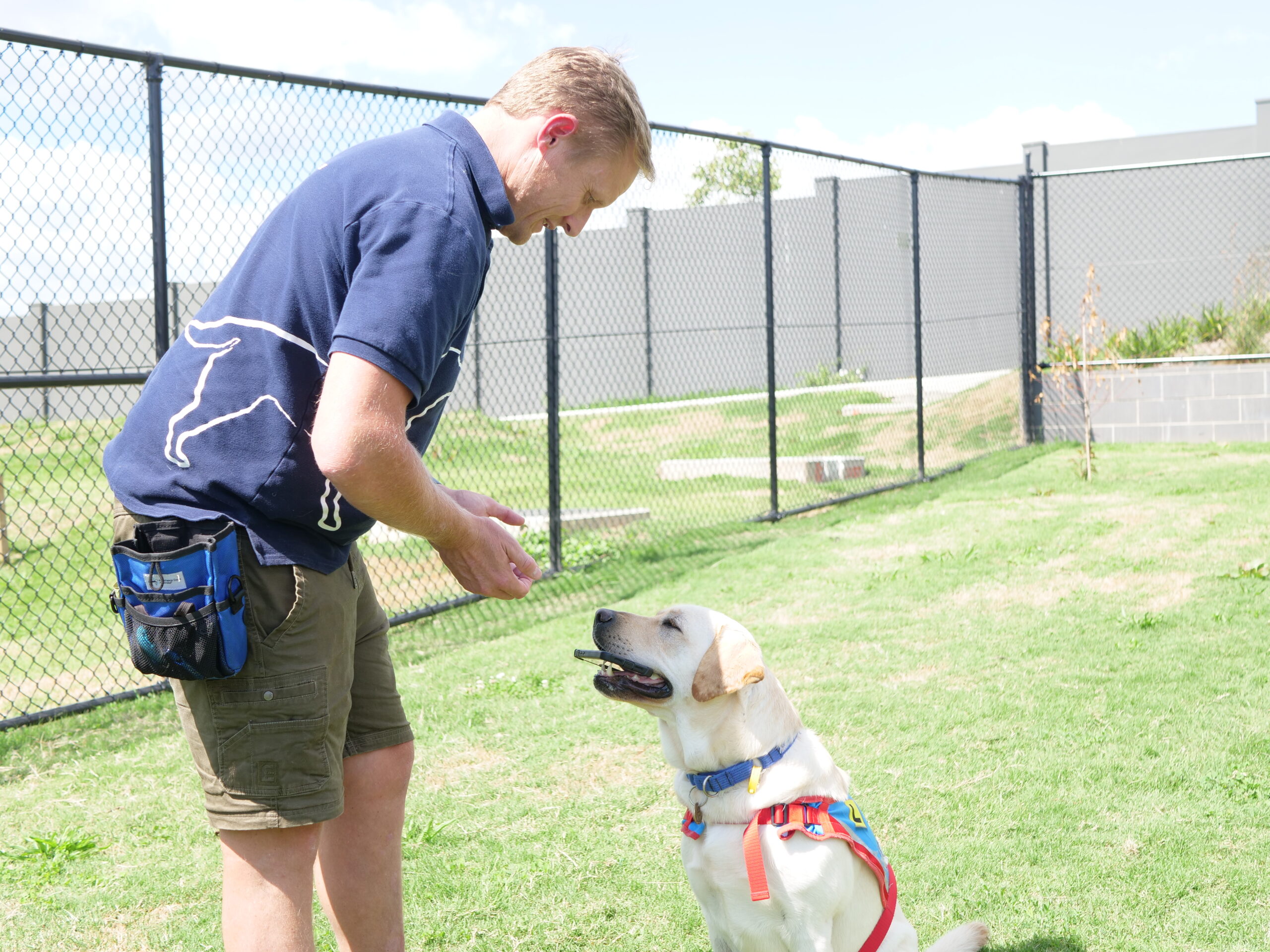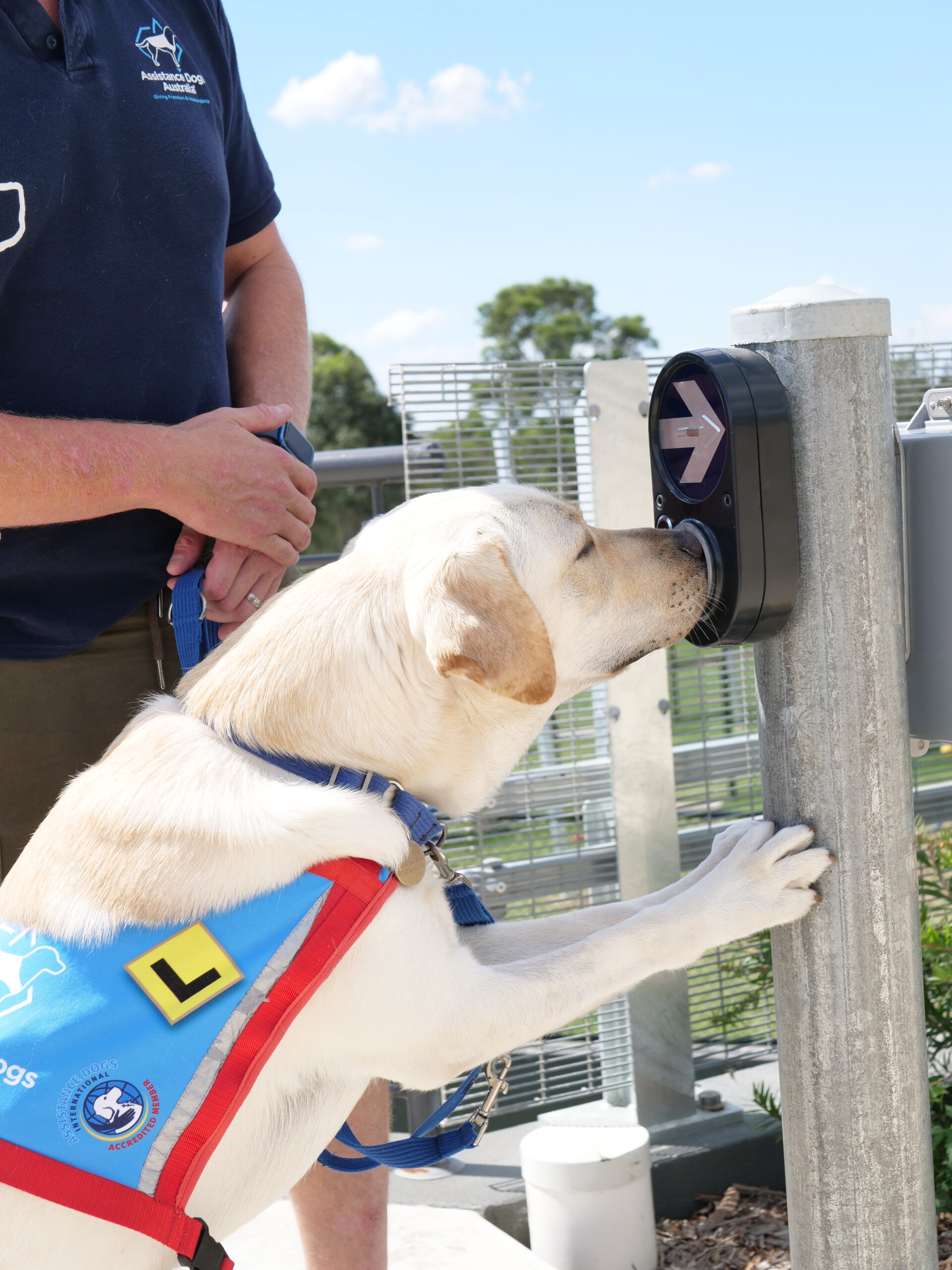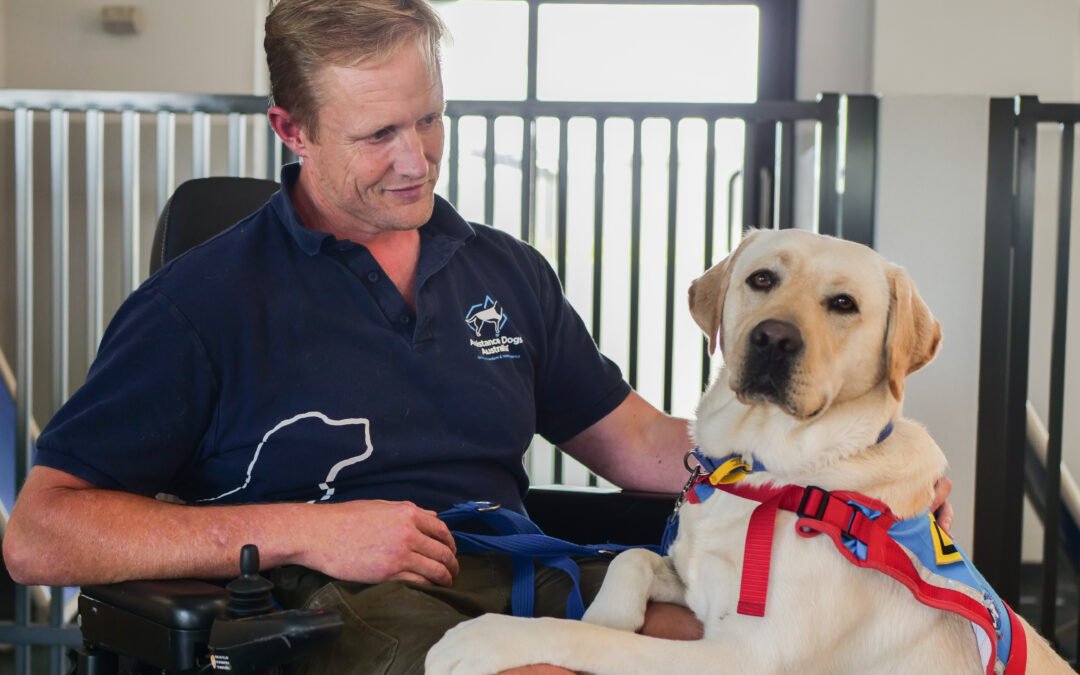Chris, ADA’s Team Leader/Senior Instructor is responsible for all of the dogs in Advanced Training, as well as the instructors and trainers in the NSW team. He joined Assistance Dogs Australia way back in 2017 as a puppy educator and loved it so much that he chose it as a career. “I always wanted to be close to the action with dogs and clients, which is part of why I love my job.”
Chris thinks ADA’s supporters should be as proud as he is when dogs graduate Advanced Training and are paired with the perfect client – someone who can most benefit from the dog’s unique set of skills. Advanced Training dogs that are paired with physical clients like Natasha, who have a physical disability, are selected because they display certain attributes like a strong work drive and high level of focus.

Chris recalls that Natasha’s Assistance Dog, Emma, “was a great little dog who came out of our Puppy Education program highly skilled.” Her high energy positioned her perfectly to support a physical client with tasks like collecting dropped items or opening doors and she. She was also a quick study, which helped a lot, too!
It’s important to say that even though all of our dogs go through the same training and are taught the same 50+ cues that will support clients, trainers/instructors get to learn their unique temperaments, so that as they reach the end of their Advanced Training and they look forward to the matching process, they can start to hone the dogs’ skills to suit the particular needs of a particular client.

Each client has their own set of requirements. For example, we teach dogs to retrieve dropped items and return them to us. We might adjust the task ‘give’ if a prospective client were to find it difficult to take an item from a dog once it was retrieved, so the dog might need to learn to hold it for longer so the client would have time to take it, or the dog would place it on the client’s lap instead. In the photo above, the ‘tug’ task has evolved into one that allows Emma to assist Natasha with taking her socks off at the end of the day.
Our training program is made so much more powerful because we’re able to support the individual needs of a client. Trainers and instructors form one of the linchpins that strengthen the work ADA does and we’re so grateful for Chris and all of our training and instructor teams across each state for the work that they do training Assistance Dogs. The instructors carefully match dogs with clients that they would most aptly assist, and support clients with ongoing handling techniques and Public Access Test facilitation for the length of the dogs’ working lives.

